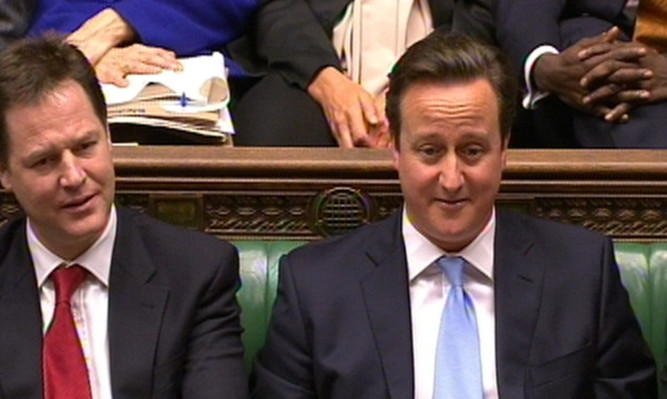The Government has published a 119-page audit of its record since coming to power in 2010, which acknowledges it has not fulfilled some of the promises made when the coalition was formed.
Prime Minister David Cameron promised the document would deliver a “full, frank and completely unvarnished” assessment of how the coalition has performed, and said it would show “a record to be proud of”.
But Labour released its own “audit of broken promises,” listing 40 areas in which it said the coalition had failed to live up to its pledges.
The Conservative-Lib Dem document, entitled Programme for Government Update, was produced as an annexe to the coalition’s Mid-Term Review, unveiled with great fanfare on Monday.
However, it went unmentioned during a Downing Street press conference with Mr Cameron and Deputy Prime Minister Nick Clegg. Its existence only came to light when one of the Prime Minister’s aides was spotted in Downing Street yesterday carrying a document that appeared to suggest its publication was delayed to avoid overshadowing the favourable media coverage they expected to receive from Monday’s event.
The audit does not divide the promises from the 2010 Coalition Agreement into those which have been met or missed. But it notes that the planned cull of badgers to help control bovine TB had been “postponed,” a free vote on repealing the hunting ban has “not yet been taken forward” and that after pledging to cancel a third runway at Heathrow the Government has set up a commission to look at “all the options” for future airport capacity.
At the first session of Prime Minister’s Questions of 2013, Labour leader Ed Miliband branded Mr Cameron a “PR man who can’t even do a relaunch,” and said the Government had broken a number of promises since coming to power.
Top of the list of broken promises identified by Labour was the failure to balance the nation’s books within five years something which is not now expected to happen until 2018 at the earliest.
But yesterday’s audit said the independent Office for Budget Responsibility had confirmed the Government was “on course to meet our fiscal mandate” of balancing the books, which was based on a rolling five-year period, and not on the fixed target date of 2015.
On energy and climate change, the coalition agreement included a commitment to seek to increase the target for energy from renewable sources: “subject to the advice of the climate change committee.”
However, following committee’s advice, it said the target would not be raised and it would focus instead on achieving the current 2020 renewables target.
The agreement promised to “cancel” the third runway at Heathrow and to refuse permission for further runways at Gatwick and Stansted.
The document, however, said that while they had “not proceeded” with the runway at Heathrow a commission had been set up to look at “all the options” for future airport capacity.
A commitment to replace air passenger duty with a per-flight duty, had been dropped due to concerns over “legality and feasibility”.
